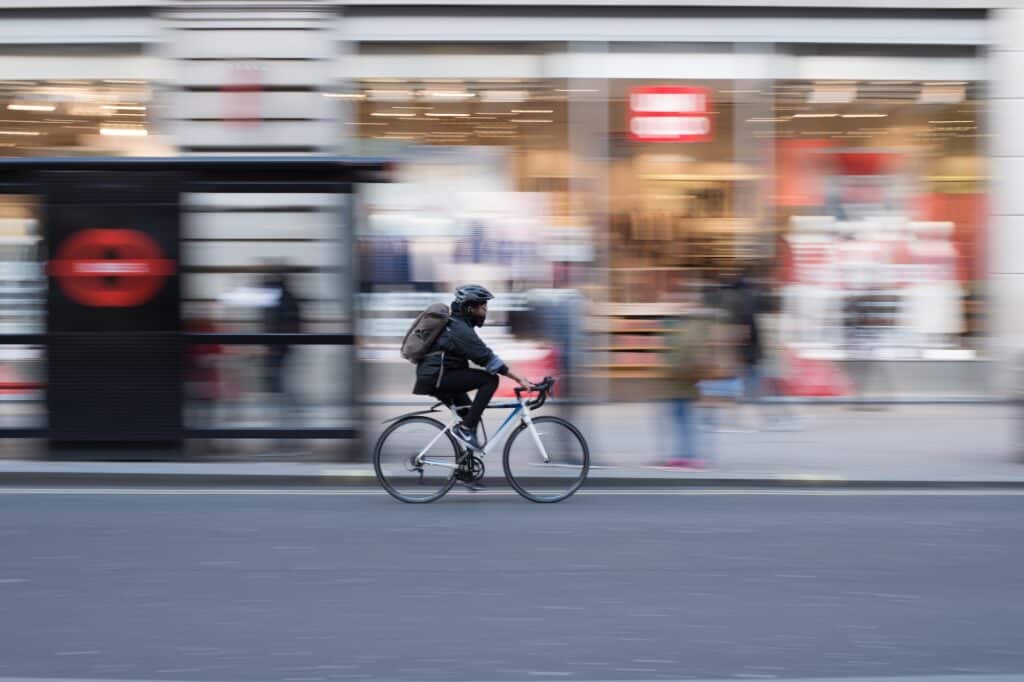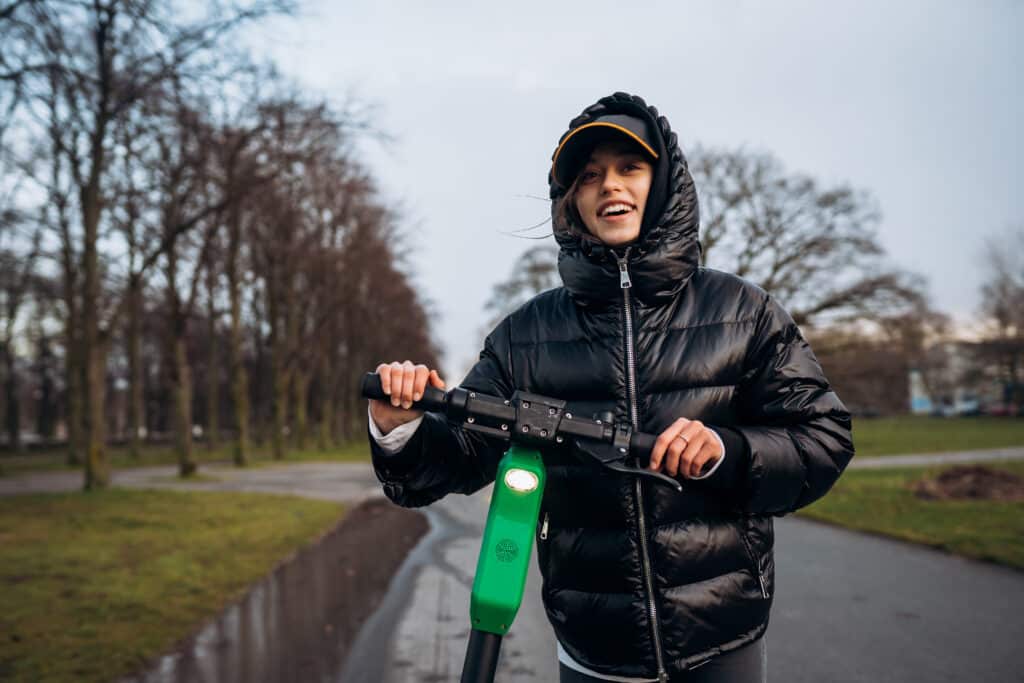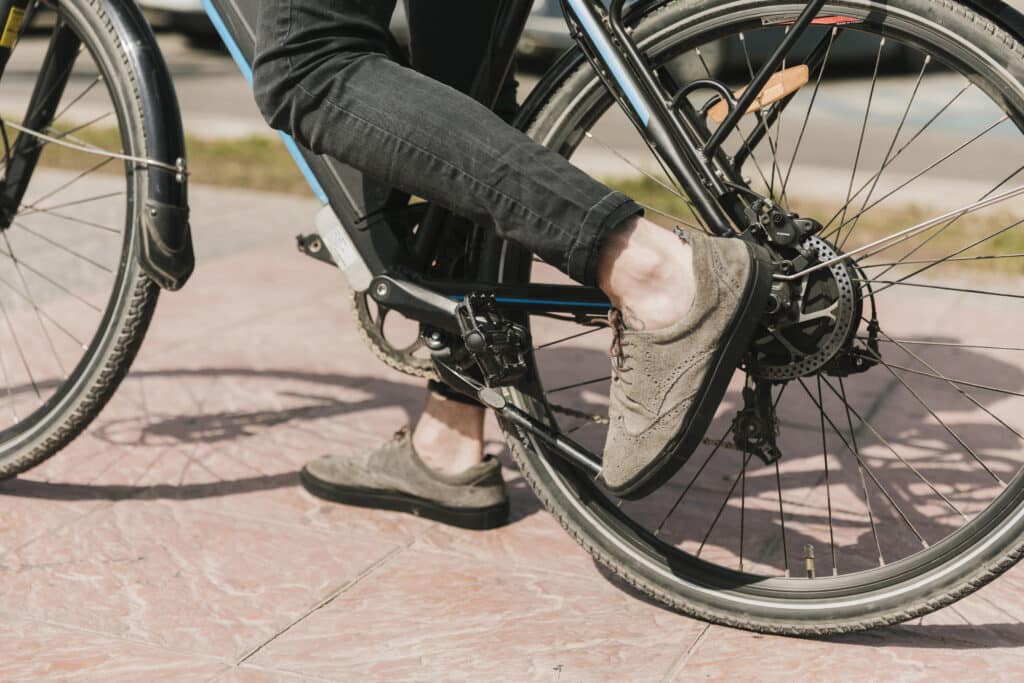Can e-bikes get wet? Absolutely, but riding them in the rain requires some precautions. While e-bikes offer fantastic exercise and convenience, wet weather can present unique challenges.
In this article, we’ll explore essential safety tips for riding your e-bike in the rain. From selecting the right clothing to setting up your e-bike properly, staying safe in wet conditions is crucial.
Most e-bikes are water-resistant, making it generally safe to ride or park them in the rain. However, be aware that some models aren’t designed for wet conditions, so it’s important to understand your bike’s limitations.
Can You Ride an e-bike in The Rain?
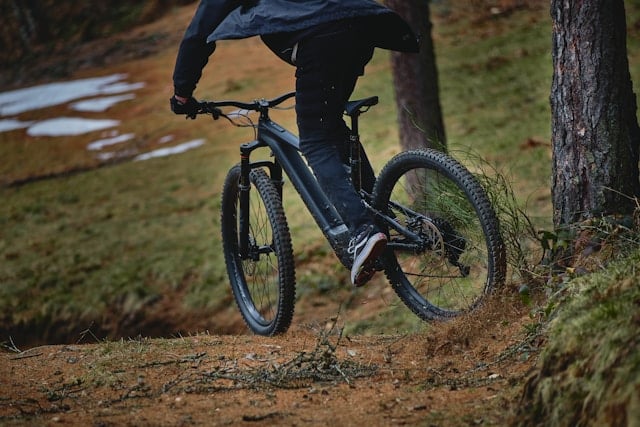
Yes, you can ride an e-bike in the rain, but it’s important to ensure your e-bike is designed for wet conditions.
Not all e-bike models are tested for rain, so check your manufacturer’s guidelines. Avoid riding through puddles or standing water to prevent damage to your bike’s electronics.
Many e-bikes, like Aventon e-bikes, are built to the IPX4 water-resistant standard, making them safe to ride or park in the rain. Electric bikes are effective in various weather conditions, providing safety, security, and comfort throughout your ride.
10 Tips For Safe And Enjoyable e-bike Rides in The Rain
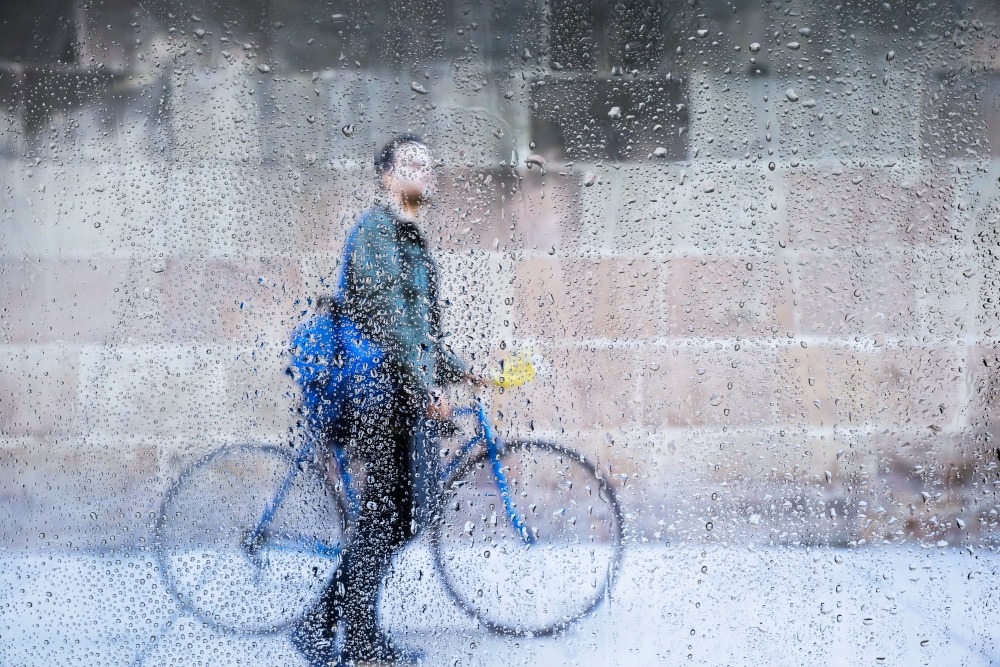
Riding an e-bike in the rain is perfectly fine, but there are some important safety tips to keep in mind. From proper gear to bike maintenance, following these guidelines can ensure a safe and enjoyable ride.
1. Use bike fenders
Fenders help keep your clothing dry and protect your bike from road debris. They shield the drivetrain, motor, and battery from splashes, ensuring your ride remains smooth and safe. Installing fenders is a small investment that can save you from a lot of discomfort and potential damage to your e-bike’s components.
2. Wear weatherproof clothing
Staying dry and warm is crucial. Opt for a light raincoat or water-resistant jacket, and avoid cotton, which soaks up water. Synthetics or wool garments perform better in wet conditions as they wick moisture away and keep you warm. Don’t forget gloves to keep your hands dry and warm and glasses to protect your eyes from rain.
3. Weatherproof your gear
Keep your belongings dry with waterproof bags or panniers. Items like notebooks, MP3 players, and GPS devices should be stored in sealed, waterproof containers. This ensures that your electronics and other essentials remain safe and functional even in heavy rain.
4. Use headlights and taillights
Visibility is key in the rain. Use blinking head and tail lights on your helmet or handlebars to make yourself visible to other road users. Reflectors are useful but not a substitute for proper lighting. Adequate lighting helps you see and be seen, reducing the risk of accidents in low-visibility conditions.
5. Brake early
Wet conditions can make stopping more difficult. Electric bikes with disk brakes perform better in the rain than traditional rim brakes, but it’s still important to brake earlier than usual to avoid skidding and ensure a safe stop. High-pressure tires can hydroplane, so brake gradually and in advance of your usual stopping point.
6. Be cautious of corners
Slow down more than usual when approaching corners in the rain. Avoid leaning too much to keep as much tire contact with the ground as possible, reducing the risk of slipping. E-bikes have more power, so be mindful of your speed and power application to maintain control.
7. Look for slick spots
Rain can create slick spots from oil and dirt on the road. Avoid colorful puddles, which may contain oil or lubricants, and be wary of painted road lines and railroad tracks, as they become slippery when wet. Cross railroad tracks at a 90-degree angle to prevent your tires from slipping.
8. Make yourself visible
Wear neon or luminescent clothing with reflectors to increase your visibility. Follow traffic laws and be extra cautious to avoid accidents. The more visible you are, the safer you’ll be in poor weather conditions.
9. Plan a safe route
Choose routes with fewer hazards. Avoid roads with gravel, loose stones, and cracks in the pavement. This not only keeps you safe but also protects your bike from damage. Plan your ride to include well-maintained roads and bike paths whenever possible.
10. Clean your electric bike after you ride
After a rainy ride, take a few minutes to clean and dry your bike. This maintenance prevents rust, especially on the chain, and ensures your e-bike remains in good condition for future rides. Dry the chain right away to avoid surface rust and keep your bike performing smoothly.
By following these tips, you can enjoy your e-bike rides even in the rain, staying safe and comfortable throughout your journey.
Do’s And Don’ts for Riding Your E-bike in the Rain
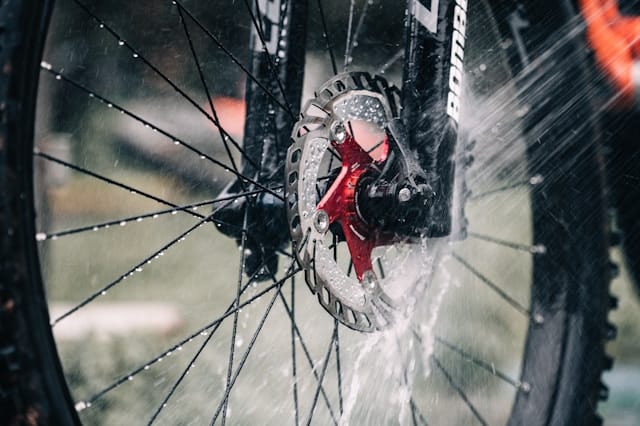
Riding your e-bike in the rain is manageable with some simple precautions. Here are essential do’s and don’ts to ensure a safe and enjoyable ride.
Do’s:
- Treat it like a regular bike: Go ahead and ride your e-bike in the rain. Mud, dirt, and even heavy rain shouldn’t be a problem.
- Keep it clean: After a rainy ride, clean your bike. Dry the chain immediately to prevent surface rust. A clean and lubricated chain will last longer and perform better.
- Use low-pressure water: When cleaning your bike, use low-pressure water and rags. High-pressure water can damage components that are not designed to withstand such force.
- Lubricate the chain: Regularly lubricate your chain after cleaning to maintain smooth operation and extend its lifespan.
- Check tire pressure: Ensure your tires are properly inflated to avoid hydroplaning and to maintain good traction on wet surfaces.
Don’ts:
- Avoid high-pressure washing: Do not use high-pressure water or air to clean or dry your e-bike. These can force water into sensitive areas and cause damage.
- Don’t leave it outside: While riding in the rain is fine, don’t store your bike outside in wet conditions. Even with water resistance, prolonged exposure can lead to water seeping into parts where it shouldn’t, causing long-term damage.
- Don’t ignore wet components: Pay attention to any components that remain wet after your ride. Dry and clean them to prevent rust and corrosion.
- Don’t ride through deep puddles: Avoid riding through deep puddles or standing water, as this can damage the electronics and motor of your e-bike.
- Don’t forget your lights: Ensure your headlights and taillights are functioning properly to maintain visibility during rainy conditions.
Conclusion
Riding your e-bike in the rain can be safe and enjoyable with the right precautions. By following these tips, such as using bike fenders, wearing weatherproof clothing, and ensuring your gear is protected, you can stay comfortable and secure.
Always brake early, be cautious of corners, and look out for slick spots to maintain control. Remember to keep your bike clean and dry after each ride to extend its lifespan. By adhering to these do’s and don’ts, you can confidently navigate wet conditions and make the most of your e-bike, rain or shine.
Yes, most e-bikes are water-resistant, making it generally safe to ride them in the rain, but it’s important to understand your bike’s limitations.
Yes, as long as your e-bike is designed for wet conditions and you follow safety precautions like using lights and wearing weatherproof clothing.
Use bike fenders, wear weatherproof clothing, ensure proper lighting, brake early, and avoid slick spots to stay safe.
Rain can potentially damage e-bikes that are not designed for wet conditions. Avoid riding through deep puddles and ensure proper maintenance after rides.
Clean and dry your e-bike, especially the chain, to prevent rust and ensure it remains in good condition for future rides.

